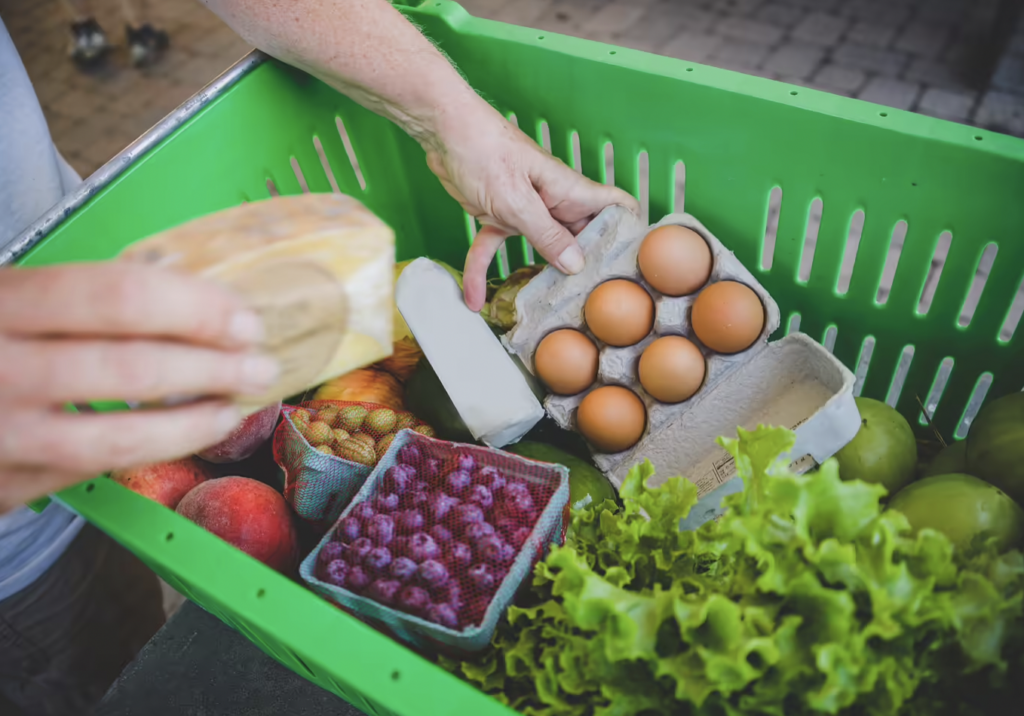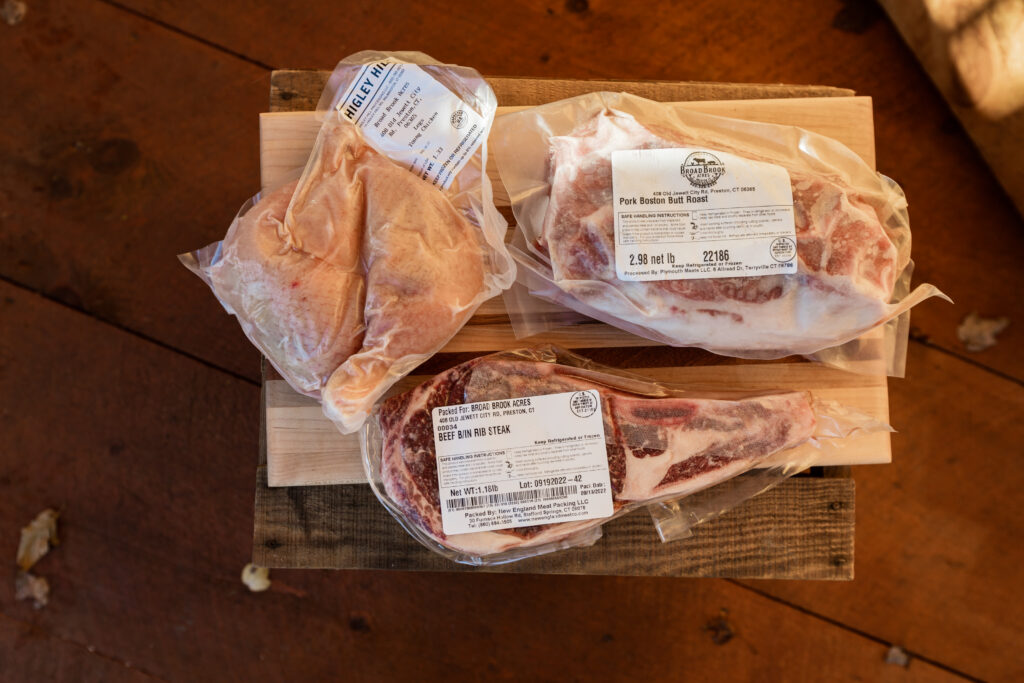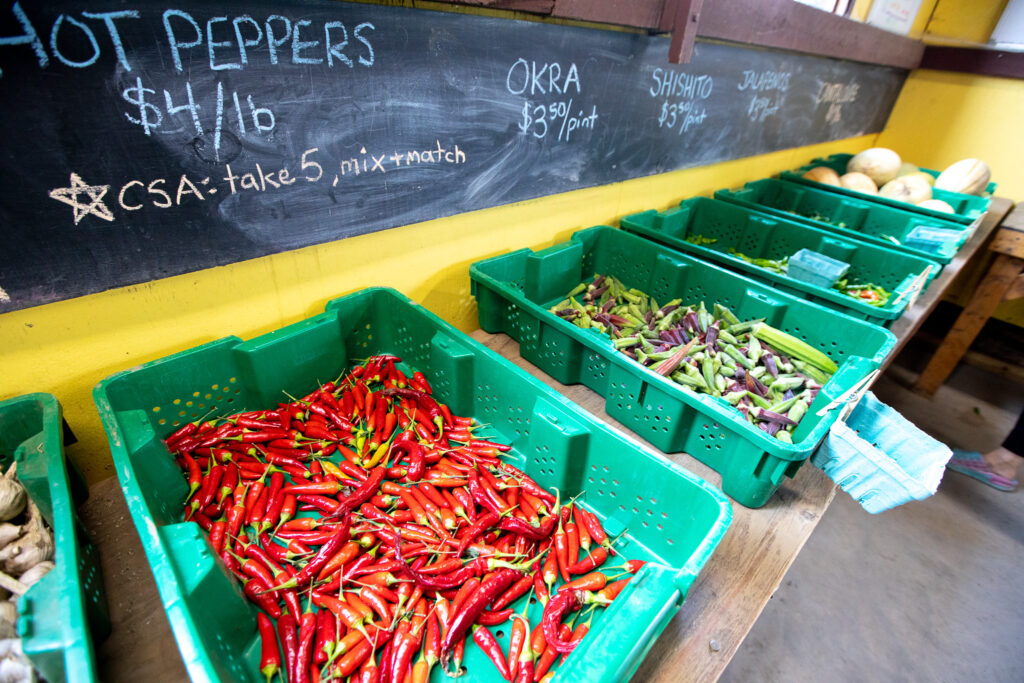Everything You Need to Know About Connecticut CSAs
Farmers may be less visible during the winter months, but that doesn’t mean they aren’t hard at work. Some, like dairy and livestock farmers, continue to bring products to stores and markets year-round. Those that rely primarily on crop sales spend the winter buying seeds, upgrading equipment, and otherwise preparing for the growing season.
One innovative way to support CT Grown farmers during the winter is to purchase a share in a Community Supported Agriculture (CSA) program. Many farms in Connecticut begin opening these programs for signups at the start of the year.
CSAs are beneficial to both farmers and consumers. By purchasing a share of the upcoming harvest in advance, you can help sustain a farm’s cash flow and ensure that it is well-prepared for the season ahead. You’ll also enjoy a better understanding of how your food is grown, a closer connection with your local farms, and consistent access to fresh produce, proteins and flowers.
Each farm has its own unique way of offering a CSA. This guide will help you to understand the program and how it can help you to support local farmers and eat healthier foods.
How does a CSA work?

CSAs follow a simple shareholder model. By paying in advance during the winter, you purchase a share of the farm’s crop during the upcoming season. You receive your share on a weekly or biweekly basis, over the course of several weeks or the full growing season.
Only a limited number of shares are available, with the idea that this will create a closer relationship between farms and shareholders. By communicating with shareholders about their preferences, farmers can also be better prepared for the growing season ahead.
Why should I sign up for a CSA?
There are numerous benefits to signing up for a CSA. These include:
- A regular supply of fresh CT Grown fruits, vegetables, and other products
- Produce that retains more of the nutrients present at harvest, since it spends less time in transit or storage
- Getting introduced to new foods which you may not have otherwise tried
- Knowing exactly where your food comes from
- Supporting a local business, including farms committed to sustainable and environmentally conscious operations
- Regular visits to your local farm or farmers’ market — a particularly enjoyable outing for families with young children!
- Useful supplements like recipes and tips on how to prepare the latest share
- Members-only perks like farm stand discounts or free surplus shares during bountiful harvests
What do I get in a CSA share?
The food in your CSA share will depend on what the farm produces, so you should check ahead to see if they’ll provide the fruits, vegetables, and other items you enjoy. Items will also vary with the season; for example, CSAs offering vegetables tend to proceed from greens and early root vegetables in the spring to a wider array of produce in the summer and hardy root vegetables in the autumn.
CSAs aren’t just limited to fruits and vegetables; some keep you supplied with meat or cut flowers. Farms may also provide bonus products or optional add-on shares for locally produced goods like eggs, cheese, honey, dairy products, or mushrooms.


CSA shares feature items produced on the participating farm, but sometimes bring in food from partnering farms and producers to offer a wider variety.
While CSA shares are typically prepackaged, some offer a “market style” pickup option. In this arrangement, you visit the farm and choose from a selection of available produce and goods.
How large are the shares?
CSAs offer several share sizes. In addition to a full share, you’ll find options to purchase a half share or a quarter share.
Farmers advise that you consider factors like your household size and eating habits when picking your share size. A large share is usually recommended for a family of at least four, while half shares are more suitable for couples.
When do I get my CSA shares?
The typical CSA season runs from June through October. However, some farms offer optional extensions in the spring and winter. Spring CSAs feature greens and early crops, while winter CSAs include winter vegetables, food grown using indoor farming techniques, and value-added foods like relishes, sauces, and jams.
Farms set specific times and days of the week for CSA members to pick up their shares.
Where do I pick up my CSA shares?

CSA pickups take place on the farm itself, but farms frequently set multiple pickup locations for better convenience. For example, CSA members may be able to collect their share at a farmers’ market where the farm sets up each week.
Some programs offer to deliver CSA shares directly to homes within a certain distance of the farm. However, this service usually comes with an extra fee.
What happens if I miss a pickup?
Farmers sometimes offer to hold on to your share to pick up at your convenience if you are unable to make one of the scheduled pickup dates. However, some warn that this option is not available due to busy schedules or concerns about the perishability of the share.
If you are on vacation or otherwise know you’ll miss a scheduled date, you can arrange to have someone else pick up the share instead. Alternatively, farmers may arrange to give you a double share at your next pickup.
If no arrangements are made, unclaimed shares are usually donated to a local charitable organization.
Is a CSA cost-effective?
Yes! A CSA’s upfront cost typically translates to about $25 to $50 per week during the harvest season. CSAs are designed to, at a minimum, offset the produce purchases you would otherwise be making in the store.
However, members often find that they’ve received goods worth more than their initial payment by the end of the season. Farms use strategies such as basing their CSA costs on wholesale prices, discounting shares for early signups, giving CSA members regular discounts in their farm stores, and providing surplus shares during strong seasons to ensure that members get a good return on their investment.
How do I pay for a CSA?
Each farm has its own payment methods, but many accept cash, checks, and credit cards. A processing fee may be charged for credit card payments.
While traditional CSAs require the cost to be paid in full in advance, some programs have payment plans to spread the purchase over the season through regular weekly or monthly contributions.
In addition, some farms provide unique options such as scholarships, workshares, or even bartering to offset or cover the cost of a CSA share.
Can I use SNAP/EBT to purchase a CSA?
SNAP/EBT can be used to purchase a CSA, as long as certain requirements are met. The benefit can be processed through a SNAP-eligible farm or vendor, or through a SNAP-eligible farmers’ market. Only SNAP-eligible items can be included in shares given to those using this payment method.
Furthermore, SNAP/EBT rules require that prepaid items must be received within 14 days. SNAP/EBT also cannot be used to pay for items bought on credit, or to pay for certain costs associated with operating a CSA, including taxes, down payments, and administrative, delivery, or membership fees.
While these rules prohibit the use of SNAP/EBT funds to make an upfront payment, they do require that farms follow certain steps to abide by these rules. People using SNAP/EBT may need to sign a written agreement committing them to the CSA. These agreements are meant to establish a clear understanding that a portion of the recipient’s SNAP/EBT benefits will go toward the CSA, and that the recipient is responsible for picking up their share. Participating farms may also require an upfront deposit using non-SNAP funds.
Some farms have established their own programs to provide CSA shares to low-income families in their communities. These programs may use donations from the community to cover the cost of a share, or offer shares at reduced rates to qualifying families.
What are the risks of signing up for a CSA?
Farmers acknowledge that there are certain risks to signing up for a CSA. Shareholders get a portion of the farm’s harvest, and shares will not be as robust if the farm is affected by drought, disease, or other factors leading to a diminished crop.
However, farms take several steps to minimize this risk. These include providing a limited number of shares, giving CSA members first priority in receiving produce, planting a surplus crop, and supplementing undersized shares with items from partnering farms.
Shareholders must also be prepared to regularly pick up and use their shares in order to get the best value from their purchase. Since a CSA purchase commits a shareholder to the full season, refunds are typically not available if you decide partway through the season that you no longer want to participate.
How do CSAs support CT Grown farmers?
The key benefit CSAs provide to farmers is cash flow during the winter months, when they are typically relying on revenues from the previous year’s growing season. The money provided through CSA purchases helps cover costs like seed and equipment purchases as well as the spring’s startup labor costs.
By communicating with their members about their preferences, farmers can anticipate the market demand in the upcoming season. This, in turn, can guide their decisions on what to grow and how much to plant.
CSAs also help to both minimize and distribute the risks associated with agriculture. By allowing a stronger cash flow during the winter, they help farmers start the growing season strong. And by having many people invest in a year’s crop, CSAs also ensure that a less productive year is not financially crippling for the farmer.